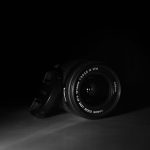Stealth Cam User Manual⁚ A Comprehensive Guide
This comprehensive guide provides resources and information for Stealth Cam users․ Learn about setup, operation, troubleshooting, and advanced features to maximize your trail camera’s potential․ Download manuals, find firmware updates, and explore various Stealth Cam models․
Camera Setup and Basic Operation
Initial setup for your Stealth Cam trail camera involves inserting batteries and an SD card; Ensure the power switch is in the OFF position before inserting either․ Refer to your specific model’s user manual for the correct battery type and SD card capacity․ Once inserted, power on the camera and navigate through the initial setup menu․ This typically involves setting the date and time, image resolution, and operating mode (photo, video, or timelapse)․ Familiarize yourself with the camera’s buttons and their functions, as described in the manual․ For mounting, utilize the included strap or consider a Python Lock cable or Articulating Ball Joint Mount for more secure placement․ Test the camera’s functionality by triggering it manually and reviewing the captured images or videos on the SD card․ Experiment with different settings like detection range and sensitivity to optimize performance for your specific environment․ Explore the Quick Start mode for pre-programmed options or delve into the Custom Start mode for more granular control over settings․ Proper setup ensures optimal performance and captures high-quality images and videos of wildlife activity․
Understanding Camera Modes (Photo, Video, Timelapse)
Stealth Cam trail cameras typically offer three primary operating modes⁚ Photo, Video, and Timelapse․ Photo mode captures still images when triggered by motion, offering options for burst mode (multiple rapid-fire shots) and image resolution settings․ Video mode records video clips, with adjustable recording length and resolution․ Some models also include audio recording capabilities․ Timelapse mode captures images at pre-set intervals, creating a sequence that compresses time, ideal for observing changes in the environment or animal behavior over extended periods․ Choosing the appropriate mode depends on your specific monitoring objectives․ Refer to your camera’s user manual for details on adjusting settings within each mode, such as image quality, video length, and timelapse intervals․ Understanding these modes allows you to tailor the camera’s operation to capture the desired type of data, whether it’s high-resolution stills, video footage with audio, or a time-compressed sequence of images․ Experiment with different modes and settings to optimize your camera’s performance and gather the most relevant information․
Image and Video Settings
Optimizing image and video settings is crucial for capturing high-quality footage with your Stealth Cam․ Image resolution directly impacts the detail and clarity of your photos․ Higher resolution yields larger file sizes but provides more detail․ Video resolution similarly affects video quality, with higher resolutions offering sharper footage․ Consider storage capacity when selecting video resolution․ Other important settings include image quality (adjusting compression levels), video length (determining the duration of recorded clips), and audio recording (if available)․ Some models offer advanced settings like PIR sensitivity (adjusting motion detection), trigger speed (minimizing delays between detection and capture), and exposure settings (controlling brightness and contrast)․ Consult your camera’s user manual for specific instructions on accessing and adjusting these settings․ Experimenting with different configurations will help you find the optimal balance between image/video quality and storage space, ensuring you capture clear and detailed footage for your specific needs․
Configuring the SD Card
Proper SD card configuration is essential for reliable performance in your Stealth Cam․ Begin by selecting a compatible SD card; consult your camera’s manual for recommended card types and capacities, often supporting up to 512GB․ Formatting the SD card within the camera is crucial for optimal compatibility and prevents potential issues․ This process erases all existing data, so back up any important files beforehand․ Some cameras offer options to format the card on first use, simplifying setup․ Understanding the difference between “quick format” and “full format” is helpful; a full format ensures data integrity, while a quick format is faster but may not fully erase all previous data․ Regularly formatting your SD card can prevent errors and maintain optimal performance․ Finally, ensure the SD card is properly inserted and securely locked in the camera’s designated slot before deploying it in the field․ This prevents data loss and ensures your Stealth Cam functions correctly․
Using the Date and Time Features
Accurate date and time stamps on your Stealth Cam images and videos are crucial for organizing and analyzing your captures․ Most Stealth Cams allow setting the date and time during the initial setup process․ Access the camera’s menu, typically by navigating using buttons on the device, and locate the date/time settings․ Input the correct year, month, day, hour, and minute, paying attention to the format (e․g․, MM/DD/YYYY or DD/MM/YYYY)․ Some models offer 24-hour or AM/PM time formats․ Ensure the time zone is set correctly to avoid discrepancies․ Some advanced Stealth Cams synchronize the time automatically via GPS or cellular connection․ Periodically verify the date and time settings, especially after battery changes or firmware updates․ Accurate timestamps provide valuable context for understanding animal activity patterns and other observed events․ Consult your specific Stealth Cam model’s user manual for detailed instructions on accessing and adjusting the date and time features․
Troubleshooting Common Issues
Experiencing problems with your Stealth Cam? Before contacting customer support, try these troubleshooting steps․ First, check the batteries․ Ensure they are fresh and correctly installed․ Low batteries can cause erratic behavior or prevent the camera from powering on․ Next, verify the SD card is properly inserted and formatted․ A corrupted or incompatible SD card can lead to recording issues․ If images are blurry, clean the camera lens and ensure there are no obstructions․ For blank images or videos, check the detection settings and ensure the camera is positioned correctly․ If the camera is not connecting to your mobile app, confirm the cellular signal strength and data plan status․ For connectivity issues with Wi-Fi, check the network password and ensure the camera is within range of the router․ Try a hard reset by removing the batteries and SD card for a few minutes․ Consult your model’s user manual for specific troubleshooting instructions and FAQs․ If problems persist, contact Stealth Cam customer support for assistance․
Understanding the Different Stealth Cam Models
Stealth Cam offers a diverse range of trail cameras, each designed with specific features and capabilities․ Understanding the differences between models can help you choose the best one for your needs․ Models vary in resolution, triggering speed, detection range, and features such as wireless connectivity and video capabilities․ Entry-level models like the G42NG offer basic functionality at an affordable price, while high-end models like the Fusion X boast 4K video, fast trigger speeds, and advanced features like dual lens technology․ Some models specialize in low-light performance with No-Glo infrared illumination, while others offer cellular connectivity for remote image and video retrieval․ Consider factors like your budget, desired image quality, and the environment where the camera will be used when selecting a model․ Refer to the comparison charts on the Stealth Cam website or consult product reviews to understand the strengths and weaknesses of each model․ By understanding the different Stealth Cam models, you can make an informed decision and choose the camera that best suits your specific requirements․

Connecting to Wi-Fi and/or Cellular Networks
Connecting your Stealth Cam to a Wi-Fi or cellular network unlocks powerful features for remote image and video access․ For Wi-Fi-enabled models, ensure your camera is within range of your network․ Access the camera’s settings menu and select the Wi-Fi option․ Choose your network from the available list and enter the password․ Cellular models require a compatible SIM card and data plan from a supported carrier․ Insert the SIM card into the designated slot in the camera․ Refer to your camera’s manual for specific instructions on activating the cellular connection and configuring the data plan settings․ Once connected, you can utilize the Stealth Cam mobile app to remotely view images, manage camera settings, and receive notifications․ Troubleshooting connectivity issues may involve verifying network credentials, checking signal strength, or contacting your cellular provider for assistance․ Ensure your camera’s firmware is up-to-date for optimal performance and compatibility with the latest network technologies․ With successful network connectivity, you can enjoy the convenience and control of managing your Stealth Cam remotely․
Utilizing the Mobile App
The Stealth Cam mobile app enhances your trail camera experience by providing remote access and control․ Download the app from your device’s app store and create an account․ To connect your camera, you can either manually enter its information or scan the QR code located under the battery tray․ Follow the on-screen prompts to complete the setup process, including configuring Wi-Fi or cellular network settings․ Once connected, the app allows you to view captured images and videos directly on your mobile device․ You can also adjust camera settings remotely, such as image resolution, video length, and detection sensitivity․ Enable push notifications to receive alerts when the camera detects activity․ The app offers convenient features for organizing and sharing your captures․ Create albums, download images and videos to your device, and share them via email or social media․ The Stealth Cam mobile app empowers you to manage and interact with your trail camera from anywhere, maximizing your scouting efficiency․

Advanced Features and Settings
Stealth Cam trail cameras offer a range of advanced features and settings to customize performance․ Explore options like time-lapse mode for capturing changes over time, or burst mode for rapid-fire image sequences․ Adjust PIR sensitivity to fine-tune motion detection and reduce false triggers․ Configure the camera’s operating mode (photo, video, or a combination) based on your specific needs․ Delve into image and video settings, controlling resolution, quality, and recording length․ Set up date and time stamps for accurate record-keeping․ Password protection using the Secure Lock feature enhances security․ Utilize the programmable Quick Set options for streamlined setup․ Explore the capabilities of different Stealth Cam models, such as the TRIAD with its high-resolution still images and HD video recording․ For advanced users, the manual settings offer granular control over camera parameters․ Master these features to optimize your Stealth Cam’s effectiveness and capture the perfect shot․
Firmware Updates and Maintenance
Maintaining your Stealth Cam trail camera involves regular firmware updates and general maintenance․ Check the Stealth Cam website for the latest firmware versions compatible with your specific model․ Downloading and installing updates can enhance performance, add new features, and fix bugs․ Consult the user manual for detailed instructions on updating the firmware․ Proper maintenance includes regularly checking the camera’s battery life and replacing batteries as needed․ Inspect the camera housing for any damage or wear and ensure the lens is clean and free of debris․ Clean the camera body with a soft, damp cloth․ Avoid using harsh chemicals or abrasive materials․ Store the camera in a dry, cool place when not in use․ Protect the camera from extreme temperatures and moisture․ Regular maintenance and firmware updates ensure optimal performance and extend the life of your Stealth Cam trail camera․ Keep your camera up-to-date for the best results․
Warranty Information and Customer Support
Stealth Cam offers a limited warranty on its products, typically covering defects in materials and workmanship for a specified period․ Refer to your specific camera model’s documentation or the Stealth Cam website for detailed warranty information, including terms, conditions, and duration․ If you encounter issues with your Stealth Cam camera, consult the troubleshooting section of the user manual or the Stealth Cam knowledgebase for common solutions․ For further assistance, contact Stealth Cam customer support via phone, email, or online chat․ Provide your camera’s model number, serial number, and a clear description of the problem․ Customer support can guide you through troubleshooting steps, warranty claims, or repairs․ Registering your product online may be beneficial for warranty purposes and to receive updates on product information and support․ Keep your proof of purchase for warranty claims․ Stealth Cam strives to provide quality products and customer satisfaction․ Don’t hesitate to contact support for help․



